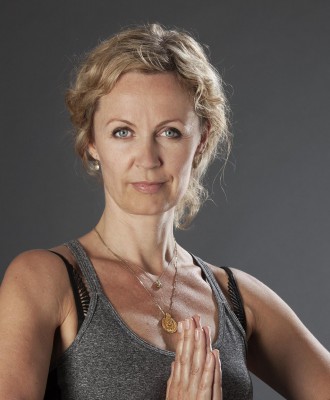Yin Yoga classes with Lill
MYC offers additional Yin yoga classes on moon days. Yin yoga focuses on long, passive stretches which go beyond the muscles into the deeper connective tissues. These classes with Lill Palmblad are both challenging and restorative. They are ideal for Ashtanga practitioners, to open a new perspective to the asanas, as well as to explore the balance of body, mind and energy in a different way.
About Yin yoga
 Yin Yoga focuses on long, passive stretches which go beyond the muscles into the deeper connective tissues. This strengthens and lengthens the tissues in a way many other practices, for example Ashtanga yoga, doesn’t. At the same time, holding poses for longer time allows time to explore feelings, thoughts and sensations arising during practice, and perhaps even let them go or at least just be.
Yin Yoga focuses on long, passive stretches which go beyond the muscles into the deeper connective tissues. This strengthens and lengthens the tissues in a way many other practices, for example Ashtanga yoga, doesn’t. At the same time, holding poses for longer time allows time to explore feelings, thoughts and sensations arising during practice, and perhaps even let them go or at least just be.
”Moving breath by breath, staying five breaths in postures and then moving again really take us somewhere. All Ashtanga practioners know that, that’s why we keep it up. However, staying even 5 minutes in the asanas, deepening the posture breath by breath, takes us to a different place. In my experience, these two places complement and reflect back on each other, both physically and mentally. I encourage everyone to try”, Lill describes.
About Lill
Lill Palmblad started her yoga practice 10 years ago, in a fitness center while trying to recover from injuries accumulated during years of aerobics, spinning, lifting, running and boxing. After a few months of yoga, she followed her teacher to a nearby yoga studio and never looked back. Since then, yoga has taken her to many places, and introduced her to teachers and fellow yogis from near and far. The core of her practice was and will always be Ashtanga yoga.
Lill has also explored other branches of the yoga tree and studied with number of senior teachers. She attended a TT course at Samahita Centered Yoga in 2012 where she was introduced to the depths of Yin yoga, which later led her to further the studies in Yin yoga with Sattva Yoga. Lill has recently given up her job as Head of Division to explore life as an independent business psychologist and yoga teacher.
Class dates
- New dates to be announced!
Prices
- Drop-in 50 kr per class for Monthly Auto Pay and 12 Months members at MYC
- Normal Drop-in kr 100 per class
- Please note: payment in cash or via MobilePay